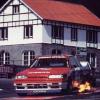Manifold Design and Turbine Housing - expensive lesson learnt
Announcements
-
Latest Posts
-
I’m going Barra fishing with my mate this weekend coming so I could probably stop in at yours on the way back home maybe Sunday arvo or Monday morning.
-
EDIT: Just a little info what my tranny is "doing" : For the long time the trans do this "bad" sound:https://www.youtube.com/watch?v=qs_iTXgDt40 It is literally the same sound and same symptoms(when i push the clutch it quites down) So is it really the shaft bearing? Also: i found this on forums: The RB20 and SR20 boxes are nearly indentical inside (rb20 has longer mainshaft)and suffer badly from bearing and selector failures when driven hard The bearing is true and selector failure kinda too...it is "harder" to get into gears specialy when i drive a little bit hard...
-
We will review wtf is going on, but if you made any donations let me know and i will follow it up with the admins
-
See, that button sounds like perfection Duncan! My eyes really don't like light shining at them from a dash when I'm driving. Being part red colourblind, I've found for most cars that I can change colours on, I set everything to red, so my eyes see the elast amount of colour! I miss normal gauges in cars
-
bro, knowing the Japanese in the 90's, i wouldn't be surprised if they shared components across their model lineup.
-




Recommended Posts
Create an account or sign in to comment
You need to be a member in order to leave a comment
Create an account
Sign up for a new account in our community. It's easy!
Register a new accountSign in
Already have an account? Sign in here.
Sign In Now